Sustainable procurement duty - impact and value analysis: main report
Analysis of the impact and value of the sustainable procurement duty in procurement.
Appendix 3: Analysis of level of detail provided in 2017-18 annual procurement reports
Our analysis of the information provided by public bodies in their 2017-18 annual procurement reports included analysis of whether public bodies’ annual reports contained reference to the different aspects of the Duty, as well as an assessment of the level of detail that public bodies provided in relation to each element of the Duty. We categorised the level of detail in reports as:
- very detailed, where there was a detailed, clear and comprehensive description of the body’s approach to that aspect of the Duty, supported by detailed examples of activity and, in some cases, impact
- sufficiently detailed, where there was a clear description of the body’s approach with some examples, and
- minimally detailed, where there was a very brief or no description of the body’s approach with no or limited examples.
This appendix contains details of the extent to which the elements of the Duty were referenced in 2017-18 annual procurement reports, and the level of detail provided in relation to each
Community benefit requirements
All public bodies that submitted an annual procurement report in 2018 and/or 2019 included some reference to community benefit requirements, whether or not they had imposed any requirements in the reporting period.
However, the level of detail provided by public bodies in these reports varies significantly. Figure A3.1 shows that most public bodies provided a sufficient level of detail in their 2018 annual procurement reports (67, 58%), while 23 (20%) provided a very detailed account of their approach to community benefits, and 25 (22%) gave only minimal details. Those classified as providing minimal detail often only provided a brief statement of their policy about community benefit requirements with little or no detail about how they implement the policy, or of the community benefits achieved.
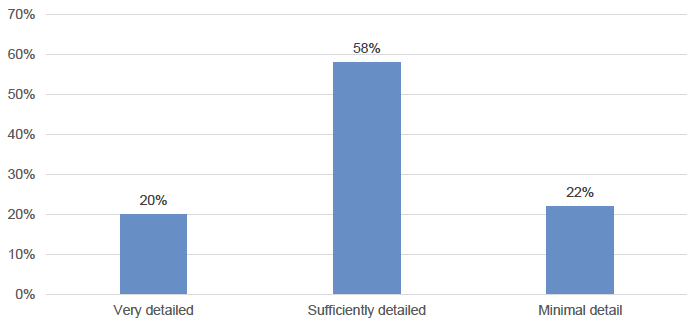
These ratings were broadly similar across all sectors, but local government bodies (8, 27%) and universities and colleges (8, 31%) were more likely than public bodies in other sectors to provide very detailed accounts, and reports with minimal detail are more common among registered social landlords (5, 45%).
Improving environmental wellbeing
Seventy-three public bodies (63%) referenced an aspect of environmental wellbeing in their 2017-18 procurement reports. Of the public bodies that did so, the largest proportion were universities and colleges (23, 32%), followed by central government and other significant bodies (19, 26%) (Figure A3.2).
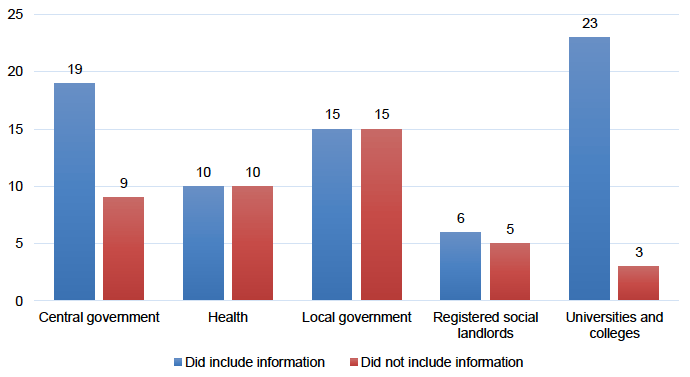
Figure A3.3 shows that over half of the public bodies that included information on environmental wellbeing in their reports provided a minimal level of detail (38, 52%), followed by 27 bodies (37%) providing a sufficient account of their approach to environmental wellbeing, and only eight bodies (11%) providing very detailed responses. The reports that contained minimal detail when referencing environmental wellbeing were most commonly submitted by local government (14, 37%) and central government bodies (11, 29%). The majority of very detailed accounts of environmental wellbeing were submitted by universities and colleges (4, 50%).
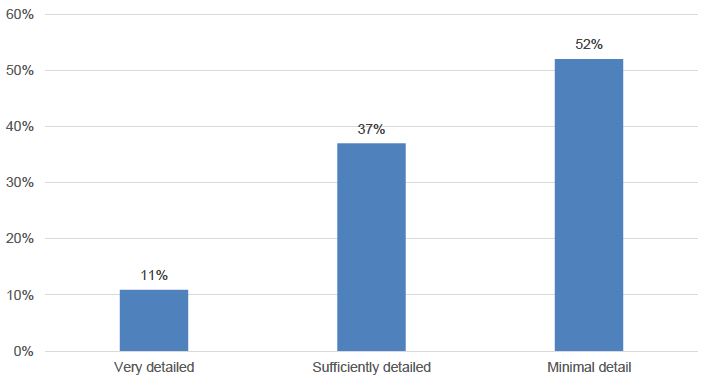
Fair work
Seventy-seven public bodies (67% of the 115 that published an annual procurement report in 2017-18) referenced an aspect of fair work practices in their report. Of the public bodies that did so, the largest proportion were central government and other significant bodies (23, 30%) and university and colleges (23, 30%); followed by local governments (20, 26%) (Figure A3.4).
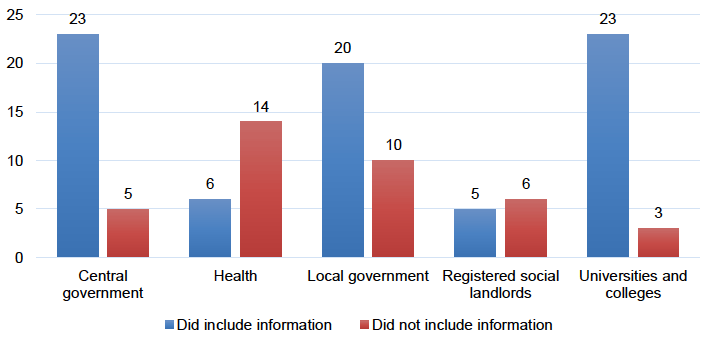
The level of detail provided by public bodies in relation to fair work practices was mixed. Only four public bodies (5%) included a very detailed account of how fair work practices they have incorporated in their procurement process. As Figure A3.5 shows, however, more than half of public bodies 39 (51%) provided minimal detail, with the remainder 34 (44%) of public bodies providing sufficient detail.
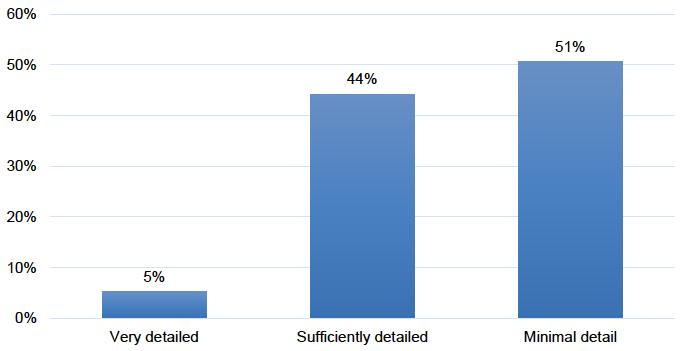
The real Living Wage
Seventy-six public bodies (66% of the 115 that published an annual procurement report in 2018) included some reference to the payment of the real Living Wage in their report. Of the public bodies that did reference the real Living Wage, the largest proportion were central government and other significant bodies (22, 29%) and university and colleges (22, 29%), closely followed by local authorities (18, 24%) (Figure A3.6).
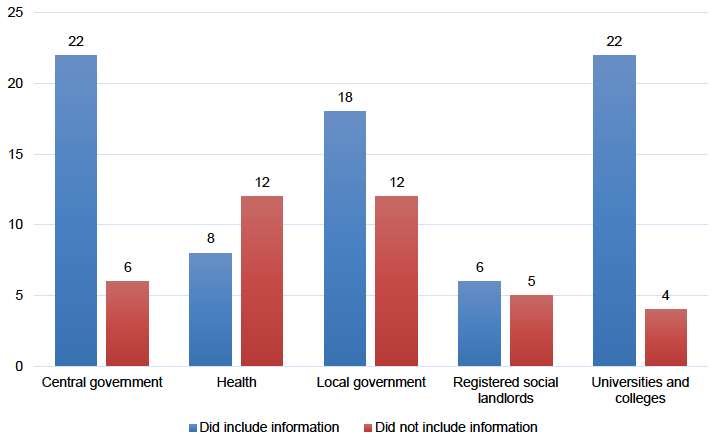
Figure A3.7 shows that 36 public bodies (47%) provided only minimal detail about the real Living Wage, 34 (45%) gave sufficient detail and only six (8%) included very detailed descriptions.
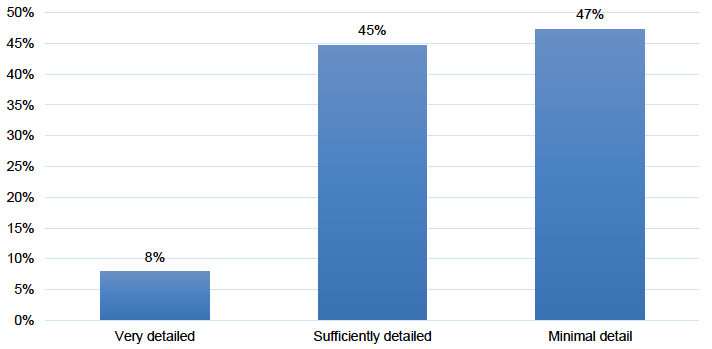
Fairly and ethically traded goods
Thirty-nine (34%) public bodies that submitted an annual report in 2018 included some reference to encouraging the use of ethical supply chains during the reporting year. Of the public bodies that did reference this, the largest proportion were universities and colleges (18, 46%) (Figure A3.8).
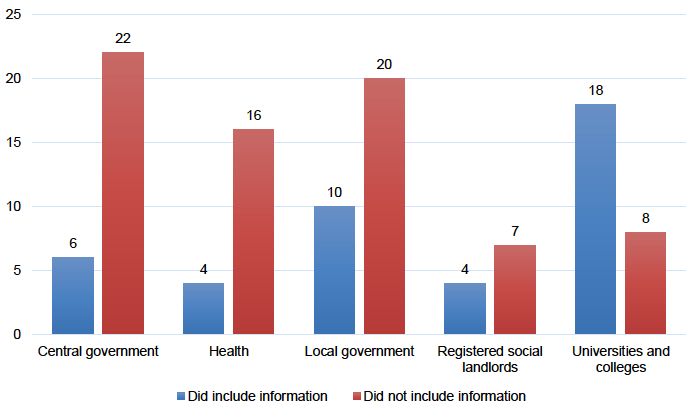
Figure A3.9 indicates that 21 public bodies (50%) gave details about ethical supply chains that could be described as minimal, 16 (38%) gave sufficient detail and only five (12%) included very detailed descriptions.
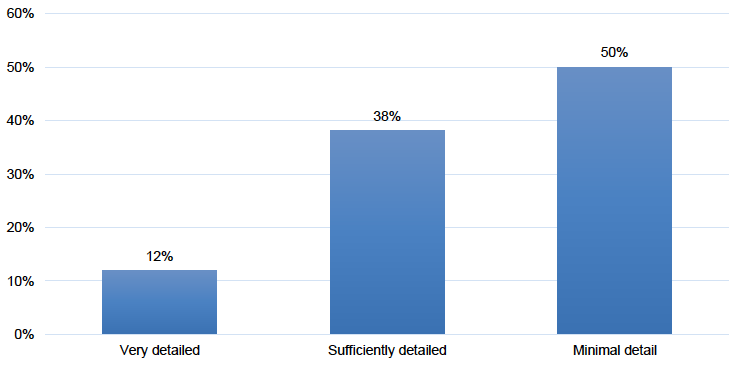
Involving SMEs
Ninety-three (81%) public bodies that submitted an annual procurement report in 2018 included some reference to facilitating the involvement of SMEs during the reporting year. Of the public bodies that did reference this aspect of the Duty, the largest proportion were local authorities (26, 28%), closely followed by central government and other significant bodies (25, 27%), and universities and colleges (24, 26%) (Figure A3.10).
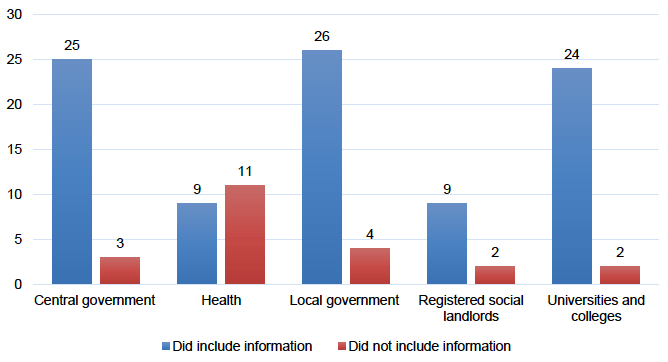
The extent of detail provided by public bodies on the ways in which they facilitated the access of SMEs was mixed. Figure A3.11 shows that 47 (51%) public bodies that referenced facilitation of SMEs in their 2018 annual procurement report only provided a minimal level of detail; 36 public bodies (39%) provided a reasonable account of how they facilitated the involvement of SMEs, while only 10 public bodies (11%) provided very detailed responses.
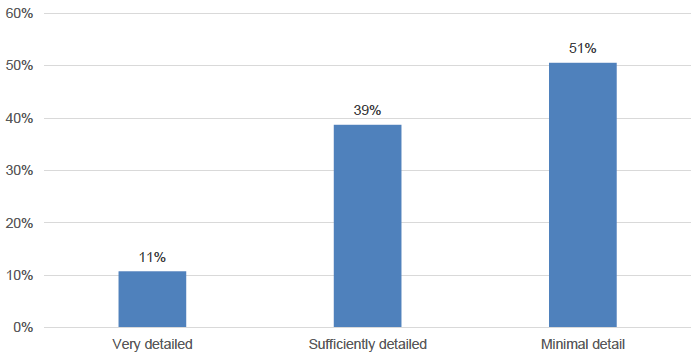
Involving third sector bodies
Fifty-seven public bodies (50%) that submitted an annual procurement report in 2018 included some reference to facilitating the involvement of third sector bodies. Of the public bodies that did reference this aspect of the Duty, the largest proportion were local government bodies (20, 35%), followed by central government and other significant bodies (17, 30%) (Figure A3.12).
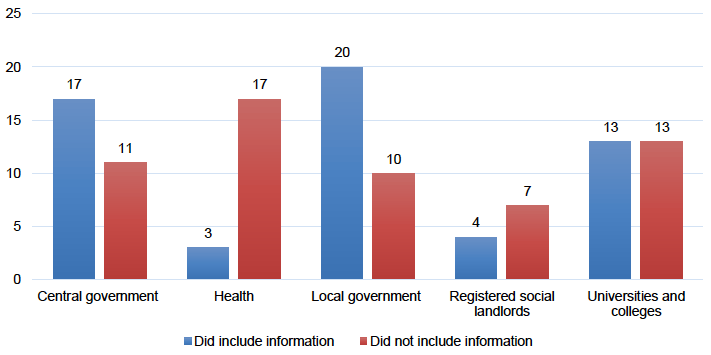
Figure A3.13 shows that 37 of the public bodies (65%) which included information about how they aimed to involve third sector bodies in their procurement activities provided a minimum level of detail; 19 bodies (33%) provided a sufficient account of how they facilitated the involvement of third sector bodies and only one public body (2%) provided a very detailed account (this was a local authority).
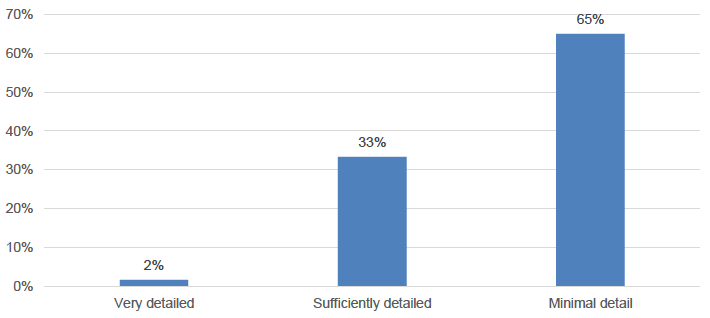
Involving supported businesses
One hundred and ten (96%) public bodies that submitted an annual procurement report in 2018 included some reference to facilitating the involvement of supported businesses with only four organisations not providing this information. This is a strong indication of widespread compliance with the Duty – and it is important to note that even those that did not report that they are doing so may be involving supported businesses in practice (Figure A3.14).
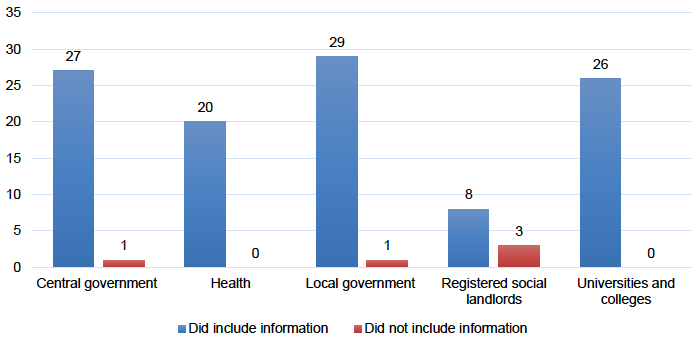
While Figure A3.15 shows that most public bodies provided a sufficient level of detail in their 2018 annual procurement reports (62, 56%), only 12 (11%) provided a very detailed account of their approach to facilitating the involvement of supported businesses, and 36 (33%) provided only minimal detail suggesting that there remains room for improvement in relation to reporting.
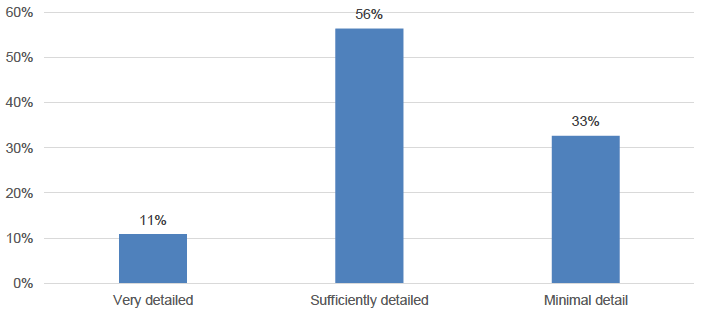
Promoting innovation
Less than half of all 2017-18 annual procurement reports submitted by public bodies contained a reference to promoting innovation. In total, 42% (48) of public bodies included this information in their annual procurement report. The chart below provides a breakdown by sector (Figure A3.16).
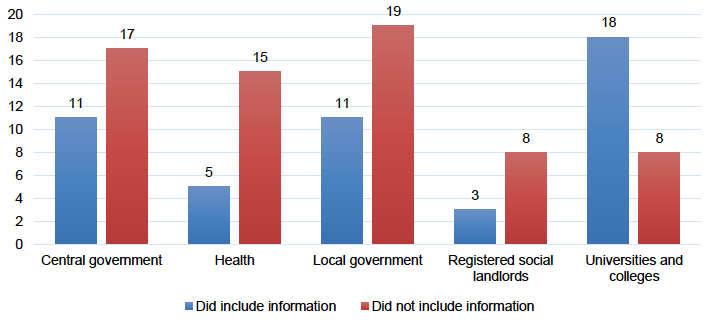
The level of detail provided in relation to promoting innovation provided by public bodies varied significantly. Over half (28, 58%) of the reports which referenced innovation contained sufficient detail about this aspect of the Duty. However, only two public bodies (4%) included a very detailed section on innovation (Figure A3.17).
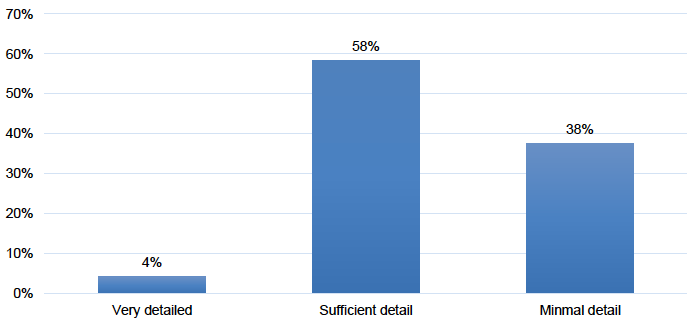
Contact
Email: socialresearch@gov.scot
There is a problem
Thanks for your feedback